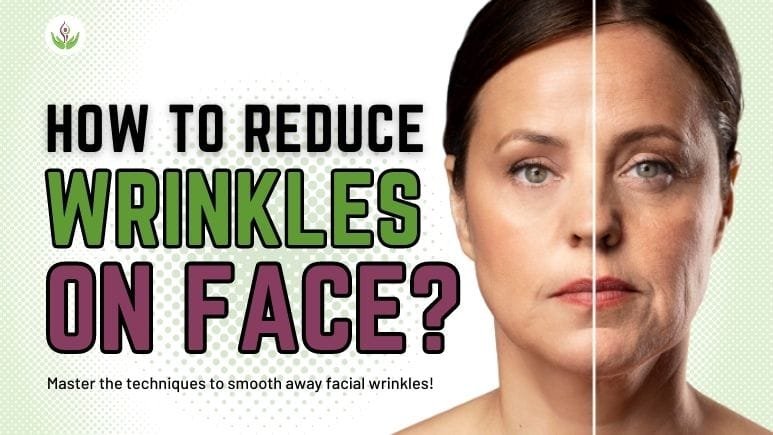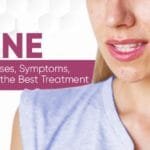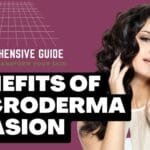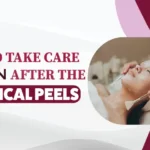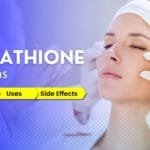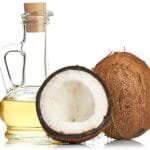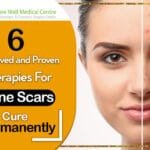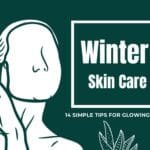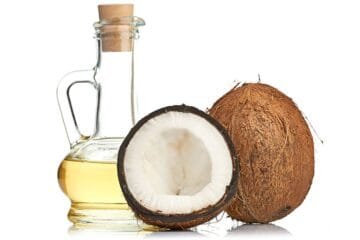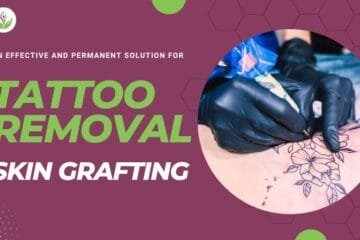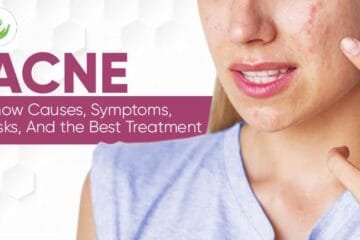Are you tired of encountering fine lines and wrinkles every time you glance in the mirror? Does it seem like your skin is revealing more about the passage of time than you’d like? Wrinkles can serve as a constant reminder, making us feel older than our true selves. Longing for the days when our skin was smooth, plump, and free from visible signs of aging is a common sentiment. However, fret not, as we’ve discovered the perfect solution to help you regain confidence and recapture the youthful radiance of your skin. Explore the effective methods to reduce wrinkles on face and embrace a more vibrant appearance.
Wrinkles are a natural part of the aging process, but many people desire to reduce their appearance to maintain a youthful and radiant complexion. In this article, we will explore various methods and techniques to help you reduce wrinkles on your face. From understanding the causes of wrinkles to implementing a skincare routine and exploring professional treatments, we’ll provide you with a comprehensive guide to combating the signs of aging.
Introduction
Welcome to our comprehensive guide on how to effectively reduce wrinkles on your face and unlock a radiant, youthful appearance that will make heads turn! Wrinkles, those pesky signs of aging, can often be a cause of concern for many individuals. They not only affect our physical appearance but can also dent our self-confidence. However, fret not! With our expert tips and innovative techniques, you can say goodbye to wrinkles and hello to a smoother, more vibrant complexion.
As we age, our skin gradually loses its elasticity and moisture, resulting in the formation of wrinkles. While wrinkles are a normal part of life, factors such as sun exposure, smoking, dehydration, and poor skincare routines can accelerate their development. Fortunately, there are numerous strategies and treatments available to help reduce wrinkles on face and improve the overall appearance of your skin.
Understanding Wrinkles
Before diving into the methods for reducing wrinkles, it’s essential to understand what they are. Wrinkles are creases and lines that appear on the skin’s surface as a result of the breakdown of collagen and elastin fibers. Collagen provides structure and strength to the skin, while elastin allows it to stretch and bounce back. As we age, the production of these proteins slows down, leading to the formation of wrinkles.
Causes of Wrinkles
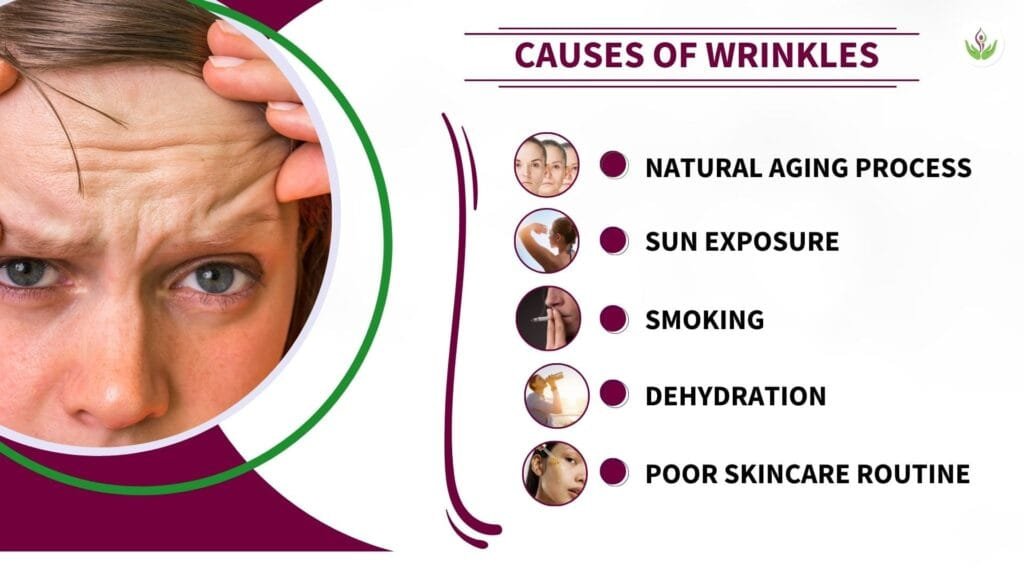
Several factors contribute to the development of wrinkles, and being aware of them can help you make informed choices to minimize their appearance.
1. Natural aging process
As mentioned earlier, aging is the primary cause of wrinkles. The natural aging process leads to a decrease in collagen and elastin production, resulting in thinner and less resilient skin.
2. Sun exposure
Excessive exposure to the sun’s harmful ultraviolet (UV) rays can accelerate skin aging and wrinkle formation. UV rays break down collagen and elastin fibers, leading to premature wrinkles and other signs of aging.
3. Smoking
Smoking is not only detrimental to your overall health but also contributes to the development of wrinkles. The chemicals in cigarette smoke damage collagen and elastin, leading to premature aging and deep wrinkles, particularly around the mouth and eyes.
4. Dehydration
When your body is dehydrated, your skin becomes dry and less elastic, making it more prone to wrinkling. It’s important to stay hydrated by drinking an adequate amount of water throughout the day.
5. Poor skincare routine
Neglecting your skin’s needs can also contribute to the formation of wrinkles. Failure to cleanse, moisturize, and protect your skin from environmental stressors can speed up the aging process.
Prevention and Lifestyle Changes to Reduce Wrinkles on Face
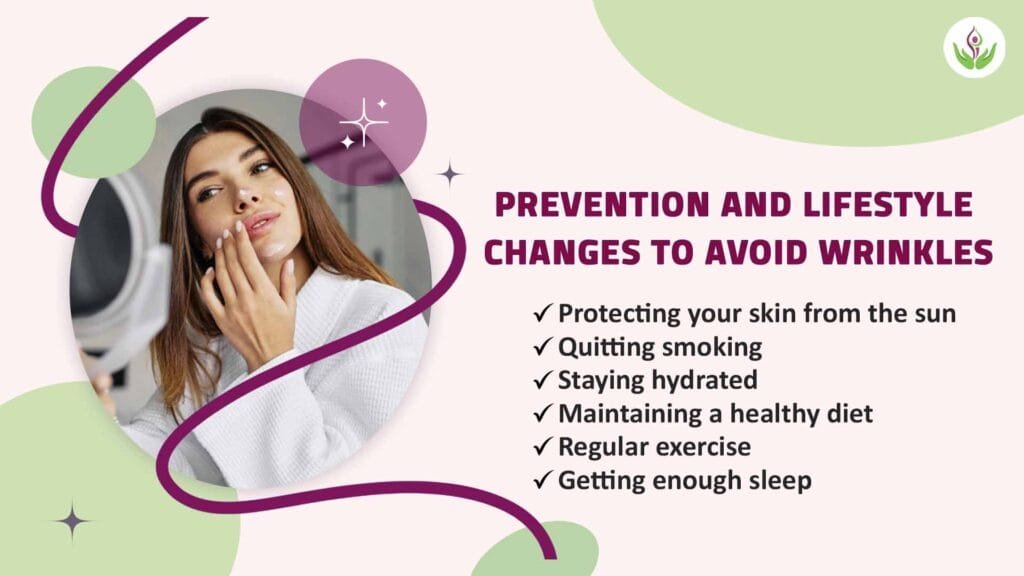
Preventing wrinkles requires a proactive approach to your overall lifestyle. By incorporating these habits into your daily routine, you can reduce the likelihood of wrinkles and maintain healthier-looking skin.
1. Protecting your skin from the sun
Apply broad-spectrum sunscreen with a minimum SPF of 30 every day, even when it’s cloudy. Wear protective clothing, such as hats and sunglasses, and seek shade during peak sun hours to minimize sun damage. Read more about of How to Protect Your Skin From The Sun’s Harmful Rays?
2. Quitting smoking
Smoking not only damages your overall health but also accelerates the aging process. Quitting smoking can improve your skin’s appearance and reduce the formation of wrinkles.
3. Staying hydrated
Ensure you drink enough water throughout the day to keep your skin hydrated. Well-hydrated skin appears plumper and is less prone to wrinkles.
4. Maintaining a healthy diet
A balanced diet rich in antioxidants, vitamins, and minerals can promote skin health and slow down the aging process. Include fruits, vegetables, whole grains, lean proteins, and healthy fats in your meals.
5. Regular exercise
Engaging in regular physical activity improves blood circulation, delivering essential nutrients to your skin. It also helps reduce stress, which can contribute to premature aging.
6. Getting enough sleep
Quality sleep is crucial for cell regeneration and collagen production. Aim for 7-9 hours of uninterrupted sleep each night to promote healthy skin and reduce the appearance of wrinkles.
Skincare Routine for Wrinkle Reduction
Establishing a consistent skincare routine can significantly help reduce wrinkles on face and improve overall skin health. Here are some essential steps to include in your daily regimen:
1. Cleansing and exfoliating
Cleanse your face twice a day to remove dirt, oil, and impurities that can clog pores and contribute to wrinkle formation. Exfoliate regularly to remove dead skin cells and promote cell turnover.
2. Moisturizing
Apply a moisturizer suited for your skin type to keep your skin hydrated and prevent dryness. Look for products that contain hyaluronic acid or ceramides, as they help retain moisture.
3. Using sunscreen
Apply a broad-spectrum sunscreen with SPF 30 or higher before going outdoors. Reapply every two hours, especially if you’re swimming or sweating.
4. Incorporating anti-aging products
Consider using skincare products that contain retinoids, peptides, or antioxidants, as these ingredients can help reduce the appearance of wrinkles and improve skin texture.
5. Facial massages and exercises
Regular facial massages and exercises can help stimulate blood circulation, improve muscle tone, and enhance the absorption of skincare products. Consult with a professional or research appropriate techniques to avoid causing damage.
Professional Treatments to Reduce Wrinkles on Face
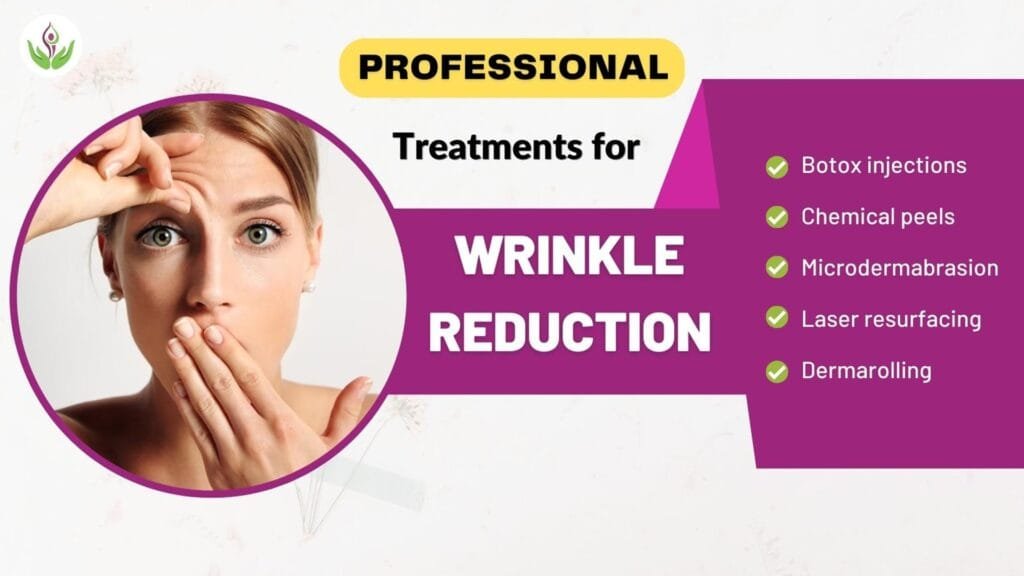
If you are looking for more immediate and targeted results, several professional treatments can help reduce wrinkles on face effectively. These treatments are typically performed by dermatologists or licensed skincare professionals and are designed to deliver noticeable improvements in skin texture and firmness.
1. Botox injections
Botox injections temporarily paralyze the facial muscles responsible for causing wrinkles, resulting in smoother skin. This treatment is commonly used for dynamic wrinkles, such as frown lines and crow’s feet. Read more about Botox Treatment.
2. Dermal fillers
Dermal fillers are injectable substances that add volume to specific areas of the face, reducing the appearance of wrinkles and restoring youthful contours. Popular fillers include hyaluronic acid and collagen-stimulating fillers. Read more about Dermal Fillers Treatment.
3. Chemical peels
Chemical peels involve applying a chemical solution to the skin to remove the outermost layer, revealing smoother and more youthful skin underneath. This treatment helps reduce wrinkles, improve skin texture, and even out skin tone. Read more about Chemical Peels Treatment
4. Microdermabrasion
Microdermabrasion uses a handheld device to exfoliate the top layer of skin, promoting cell turnover and collagen production. It can minimize the appearance of fine lines and wrinkles while improving skin texture. Read more about the benefits of microdermabrasion.
5. Laser resurfacing
Laser resurfacing uses targeted laser beams to remove damaged skin layers and stimulate collagen production. This treatment effectively reduces wrinkles and improves skin tone and texture.
6. Dermarolling
Dermarolling, also known as microneedling, involves using a roller with tiny needles to create controlled micro-injuries on the skin’s surface. This process stimulates collagen production and enhances the absorption of skincare products, reducing wrinkles over time.
Home Remedies and Natural Treatments to Reduce Wrinkles on Face
In addition to professional treatments, several home remedies and natural treatments can complement your skincare routine and help reduce wrinkles on face. While their efficacy may vary for each individual, these remedies are generally safe to try and can support your overall efforts in maintaining youthful, healthy-looking skin.
1. Aloe vera
Aloe vera has soothing and hydrating properties that can help reduce the appearance of wrinkles. Apply pure aloe vera gel to your face and leave it on for 15-20 minutes before rinsing off.
2. Coconut oil
Coconut oil is rich in antioxidants and healthy fats that nourish the skin and improve its elasticity. Gently massage a small amount of coconut oil onto your face before bedtime.
3. Green tea
Green tea contains antioxidants that help fight free radicals and protect the skin from damage. Apply cooled green tea bags to your eyes or use green tea-infused products for added benefits.
4. Vitamin C
Vitamin C is known for its collagen-boosting properties and ability to reduce hyperpigmentation. Incorporate a vitamin C serum into your skincare routine or consume foods rich in vitamin C, such as citrus fruits and berries.
5. Retinol
Retinol, a form of vitamin A, is a potent ingredient for reducing wrinkles and improving skin texture. Use retinol-based creams or serums as directed by a skincare professional, as they can cause sensitivity and require a gradual introduction to your routine.
6. Hyaluronic acid
Hyaluronic acid is a hydrating ingredient that plumps the skin and reduces the appearance of wrinkles. Look for skincare products containing hyaluronic acid or consider hyaluronic acid injections for more targeted results.
7. Facial masks
Various natural ingredients, such as honey, yogurt, and cucumber, can be used to create homemade facial masks. These masks can provide hydration, soothe the skin, and reduce the appearance of wrinkles when used regularly.
How to Reduce Wrinkles on Face at Every Age
The approach to wrinkle reduction can vary depending on your age. Here are some specific tips for different age groups:
In your 20s and 30s
Focus on establishing a skincare routine that includes cleansing, moisturizing, and using sunscreen daily. Incorporate antioxidant-rich products to protect your skin from environmental damage and start preventive measures like wearing sunglasses and quitting smoking.
In your 40s and 50s
Consider adding anti-aging products, such as retinol or collagen-boosting serums, to your skincare routine. Professional treatments like dermal fillers that reduce wrinkles or chemical peels may also be more beneficial during this stage.
In your 60s and beyond
Continue with a consistent skincare routine and consider more intensive treatments like laser resurfacing or dermarolling to address deeper wrinkles and sagging skin. Consult with a skincare professional for personalized recommendations.
Conclusion
Reducing wrinkles on the face is a multifaceted process that requires a combination of lifestyle changes, skincare routines, and, in some cases, professional treatments. By understanding the causes of wrinkles and implementing preventive measures, you can effectively reduce wrinkles on face and maintain healthier-looking skin. Additionally, natural remedies and targeted skincare products can complement your efforts and provide further support for wrinkle reduction. Remember, consistency and patience are key, and it’s never too late to start taking care of your skin.
Frequently Asked Questions (FAQs)
While it’s challenging to completely eliminate wrinkles, various treatments and lifestyle changes can significantly reduce their appearance and improve the overall quality of your skin.
Results may vary depending on the individual and the specific product being used. It’s important to give the product enough time to work, usually a few weeks to a couple of months, before expecting noticeable improvements.
Natural remedies can provide some benefits in reducing wrinkles, but they may not be as potent or produce immediate results compared to professional treatments. Professional treatments typically offer more targeted and noticeable outcomes.
While it’s not always necessary, consulting a dermatologist can provide personalized advice and treatment options tailored to your specific needs and skin condition.
A healthy diet plays a vital role in overall skin health. Nutrient-rich foods can support collagen production, promote hydration, and provide antioxidants that help fight free radicals and reduce the appearance of wrinkles.
References:
- 1. Cevenini E, Invidia L, Lescai F, Salvioli S, Tieri P, Castellani G, et al. Human models of aging and longevity. Expert Opin Biol Ther. 2008;8:1393–405. doi: 10.1517/14712598.8.9.1393. [PubMed] [CrossRef] [Google Scholar]
- 2. Uitto J. Understanding premature skin aging. N Engl J Med. 1997;337:1463–5. doi: 10.1056/NEJM199711133372011. [PubMed] [CrossRef] [Google Scholar]
- 3. Scaffidi P, Misteli T. Lamin A-dependent nuclear defects in human aging. Science. 2006;312:1059–63. doi: 10.1126/science.1127168. [PMC free article] [PubMed] [CrossRef] [Google Scholar]
- 4. Fisher, G.J. The pathophysiology of photoaging of the skin. Cutis, 75, 5–9 (2005)58–69. [PubMed]
- 11 ways to reduce premature wrinkles. (n.d.).
https://www.aad.org/public/everyday-care/skin-care-secrets/anti-aging/reduce-premature-aging-skin - Botulinum toxin. (n.d.).
https://www.plasticsurgery.org/cosmetic-procedures/botulinum-toxin - Jaffary, F., et al. (2013). Patient satisfaction and efficacy of accent radiofrequency for facial skin wrinkle reduction.
http://www.ncbi.nlm.nih.gov/pmc/articles/PMC3906788/ - Jones, B. M. & Lo, S. J. (2012). How long does a facelift last Objective and subjective measurements over a 5-year period [Abstract].
https://pubmed.ncbi.nlm.nih.gov/23190814/ - Size of the anti-aging market worldwide from 2018 to 2023. (2020).
https://www.statista.com/statistics/509679/value-of-the-global-anti-aging-market/ - Vashi, N. A., et al. (2016). Aging differences in ethnic skin
https://www.ncbi.nlm.nih.gov/pmc/articles/PMC4756870/

